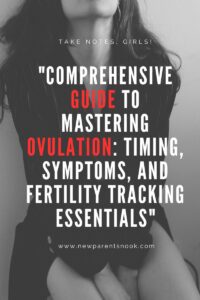Some links on our blog are affiliate links, meaning at no extra cost to you, we may earn a commission if you purchase through them. We participate in the Amazon Affiliate Program, and we recommend products we believe in. Your support helps us keep providing valuable content. Thank you!
Welcoming a new baby is an exciting, life-changing experience, and knowing what to expect during labor can help make the process smoother and less intimidating.
The journey through labor and delivery is typically divided into three main stages. Each stage of labor has unique characteristics and lengths, which can vary widely from one person to another.
In this guide, we’ll walk you through the stages of labor, providing you with the knowledge you need to prepare for the big day.
The First Stage of Labor: Early, Active, and Transition Phases
The journey begins with the first stage of labor, the longest of the three, which itself is divided into three phases: early labor, active labor, and the transition phase.
- Early Labor: This phase starts from the onset of labor until the cervix is dilated to about 3 cm. Women might experience mild, irregular contractions that gradually become more regular and stronger. During early labor, staying comfortable at home, hydrating, and resting is often recommended.
- Active Labor: Now, the cervix dilates from 3 cm to about 7 cm. Contractions become longer, stronger, and closer together. This is a good time to head to the hospital or birthing center. Techniques for pain management and comfort, such as breathing exercises and movement, can be particularly helpful.
- Transition Phase: The most intense phase, transition, occurs as the cervix dilates from 7 cm to a full 10 cm. Contractions are very strong and frequent, and this phase can be challenging, but it’s also the shortest.

The Second Stage of Labor: The Arrival of Your Baby
The second stage of labor, also known as the pushing stage, is when active participation truly begins for the birthing person.
This stage can last from a few minutes to several hours, especially for first-time mothers.
During this stage, the focus is on working with your body’s natural contractions to help guide your baby down the birth canal.
- Effective Pushing Techniques: Finding the most effective way to push can vary. Some prefer to follow their body’s natural urge to push, while others might need guidance from their healthcare provider. Breathing techniques and positions that utilize gravity, such as squatting or sitting, can be beneficial.
- Comfort Measures: Utilizing comfort measures such as controlled breathing, relaxation techniques, and the support of a birthing ball can aid in managing the intensity of this stage. Partners or doulas can provide physical support by offering massages, applying cool cloths to the forehead, and encouraging movement between contractions.
- Monitoring: Throughout the second stage, the baby’s heart rate is closely monitored to ensure they are handling the process well. Your healthcare team will guide you through this stage, suggesting position changes or rest periods as needed.

The Third Stage of Labor: Delivery of the Placenta
Following the exhilarating moment of your baby’s birth, the third stage of labor involves the delivery of the placenta.
While the focus is often on the newborn during this stage, it’s important for birthing individuals to be aware of what’s happening with their own bodies.
- Placenta Delivery: The delivery of the placenta is usually less intense than the birth of the baby but still requires contractions and effort. You might experience mild contractions until the placenta detaches from the uterine wall and is expelled. Your healthcare provider may ask you to push gently to help the process.
- Post-Delivery Care: Immediately after the placenta is delivered, healthcare providers will check it to ensure it is complete and that no pieces remain inside the uterus. This is crucial to prevent infection or excessive bleeding. You’ll also be monitored closely for any signs of complications, such as excessive bleeding (postpartum hemorrhage).
- Recovery and Bonding: The third stage is also a critical time for initial bonding with your newborn. Skin-to-skin contact is encouraged as it promotes warmth, comfort, and breastfeeding initiation. This time also allows for the birthing person to begin recovering from the labor and delivery process, with healthcare providers supporting both physical and emotional well-being.

Conclusion
Understanding the stages of labor is crucial for expecting parents as they prepare for the arrival of their child.
Knowing what to expect can alleviate fears and help parents make informed decisions about their labor and delivery plan.
Every labor experience is unique, and variations are normal. Always discuss any concerns or questions with your healthcare provider to ensure the best possible care for you and your baby.
Armed with this knowledge, you can approach your delivery day with confidence, ready to welcome your new addition to the family.







